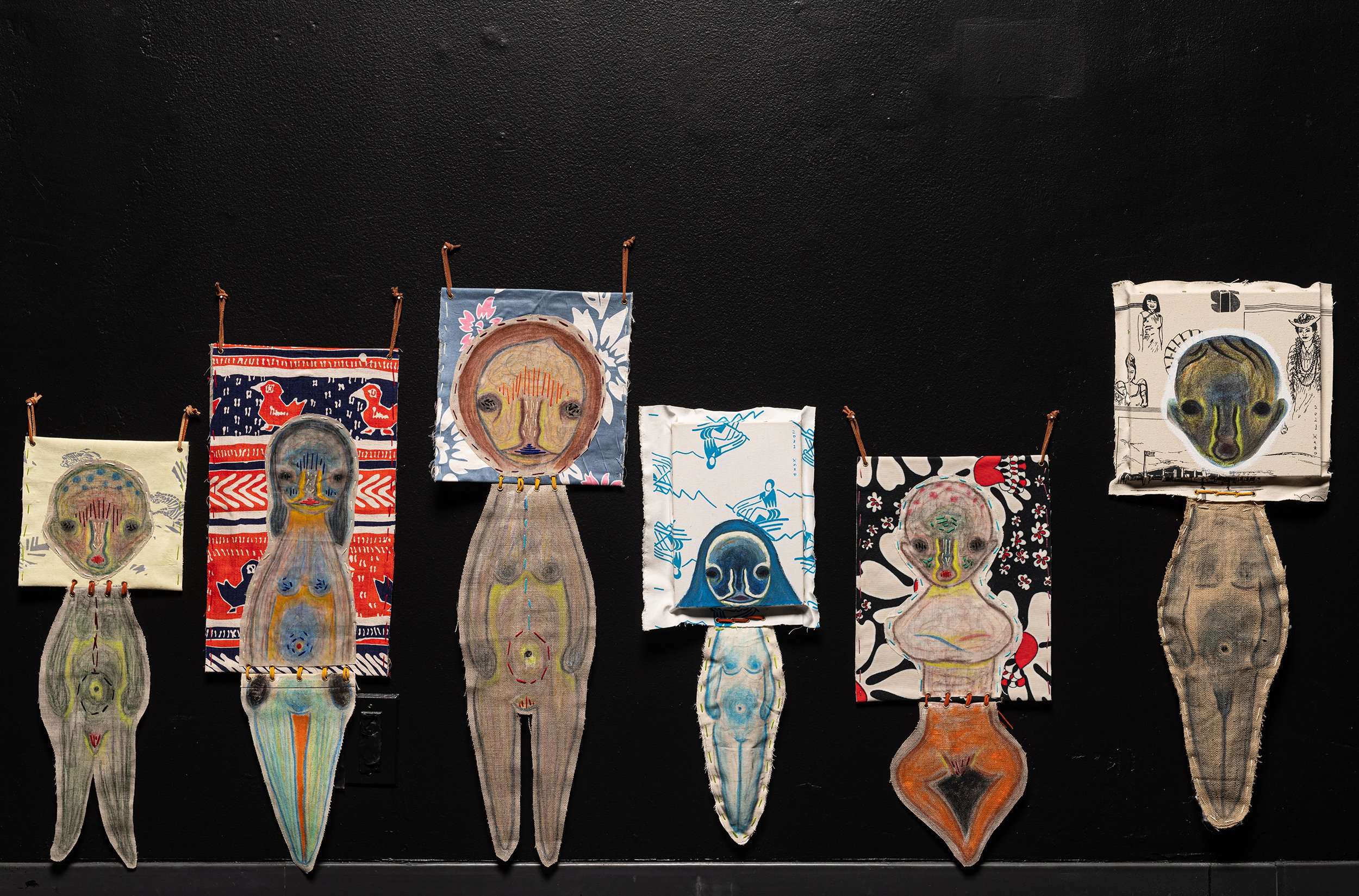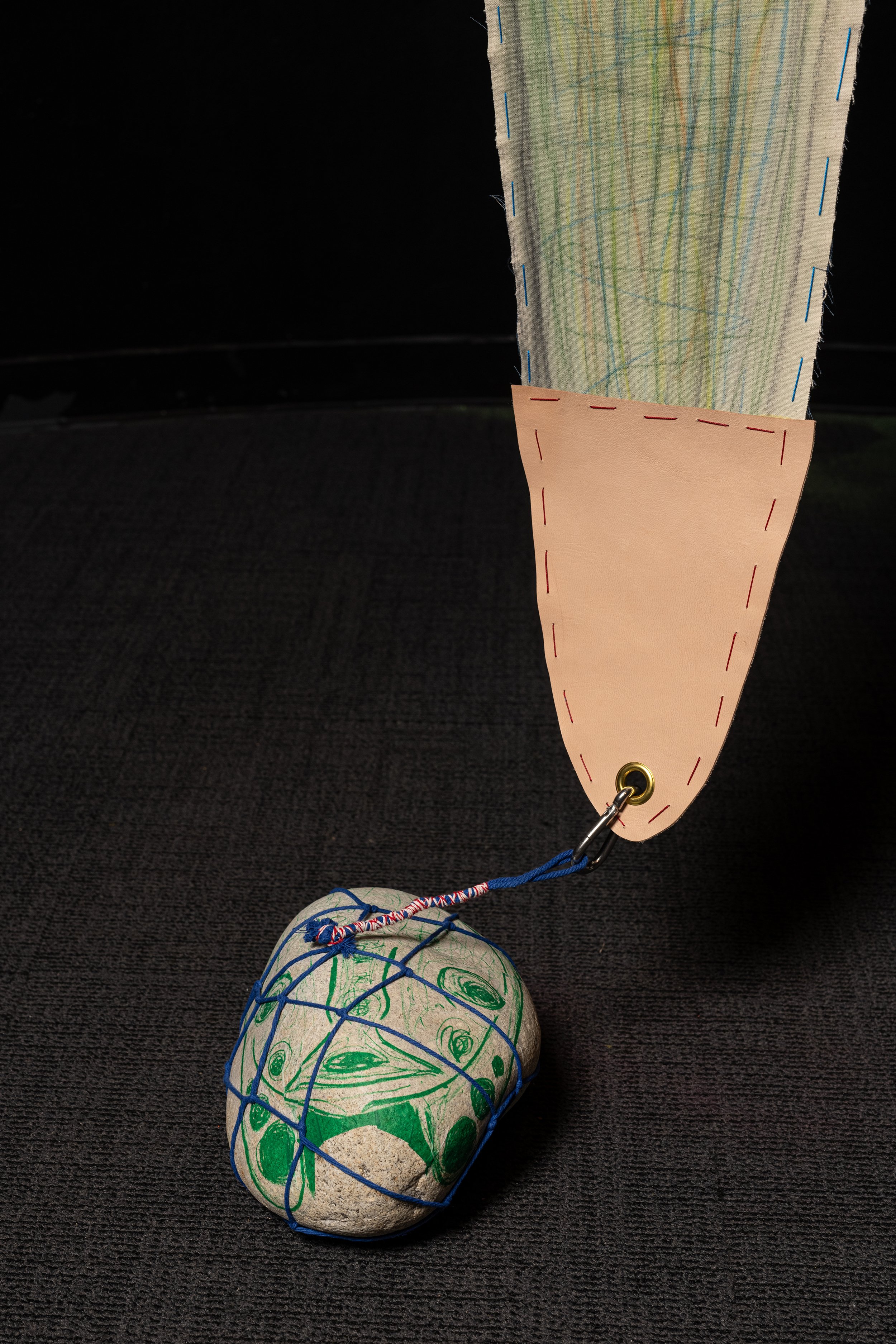hawai‘i triennial 2022
@ BISHOP MUSEUM
Izumi Kato
b. 1969, Shimane, Japan
lives and works in Tokyo and Hong Kong
Installation views: Izumi Kato, Untitled, 2021–22, Bishop Museum, HT22, Honolulu. Courtesy of the artist and Hawai‘i Contemporary. Photos: Christopher Rohrer.
Izumi Kato’s innovative practice sits at the intersection of painting and sculpture, melding mythological history and nature with science fiction to create a hybrid practice that explores ambiguity and difference. Kato has forged an unconventional career pathway in fine arts, previously working as a manual laborer before pursuing a degree from the Department of Oil Painting at Musashino Art University, Tokyo, in 1992. The artist is renowned for his physically intensive figurative paintings in which he substitutes traditional painting tools such as the brush for something more primal, introducing a unique performative gesture of sculpting paint directly onto the canvas with his hands.
Born in Shimane Prefecture, a district steeped in Japanese mythological history and tradition, where the Shinto god Okuninushi is believed to have lived, Kato was introduced to Buddhist and shamanistic beliefs from an early age. These origins can be traced in Kato’s paintings which identify with ancient myths and figures that although primitive in form, with rounded faces and bellies and loose limbs, are historical in source. Intentionally avoiding any linear narrative, these figures are suspended in time; otherworldly creatures representing the early stages of life or the gestation of the fetus inside the mother’s womb. Many of these surreal and, at other times, haunting works are also subject to a cut-up process where Kato conjoins two canvases, metaphorically and physically stitching them together to form a diptych in an act akin to the filmic process of jump cuts, where a single shot is broken into two parts and a section of footage removed to suggest the acceleration of time.
In recent years, Kato expanded his practice to sculpture and began employing the mediums of wood, stone, and soft vinyl to carve out an amalgam of human and animal figures. The aesthetic qualities of these works bear a resemblance to vertical totems and are presented as a group, implying a loose familial or clan-like lineage. Composed through combining and painting stones or rubble collected at the place of their display, his sculptural works present possible associations with local mythological and pagan references. Often manifesting in forms akin to human infants, fantastical birds, and animals, these allegorical works tease out transcultural histories of spiritualism and humanity.
For HT22 Kato has made several new works including a monumental fabric work hung from the ceiling in the central alcove of Castle Building in Bishop Museum, Honolulu. Flanked by a series of small painted sculptures made out of locally found materials, the fabric is painted with Kato’s totem-like figure which arrests the viewer with its enigmatic expression, as if having risen from some forgotten mythology.
Izumi Kato. Photo: Guillaume Ziccarelli
Izumi Kato was born in 1969 in Shimane, Japan. A graduate of the Department of Oil Painting at Musashino University in 1992, he now lives and works between Tokyo and Hong Kong. Since the late 1990s, Kato has been creating an evolving dialogue with his otherworldly yet anthropomorphized works in diverse mediums. With painting as a departure point, the artist began to incorporate wood sculptures in 2003 and soft vinyl sculptures in 2012 into his practice. Kato’s stone sculpture series which began in 2016 and the latest fabric series since 2018, depict the intimate connections between self, others and nature.
In 2007, he was invited to the 52nd Venice Biennale International Exhibition, curated by Robert Storr. Kato's works have been exhibited in multiple prestigious museums and institutions, including Center Pompidou-Metz in France, the 21st Century Museum of Contemporary Art in Kanazawa, Japan, and the Hara Museum of Contemporary Art in Tokyo, Japan, among many others.






